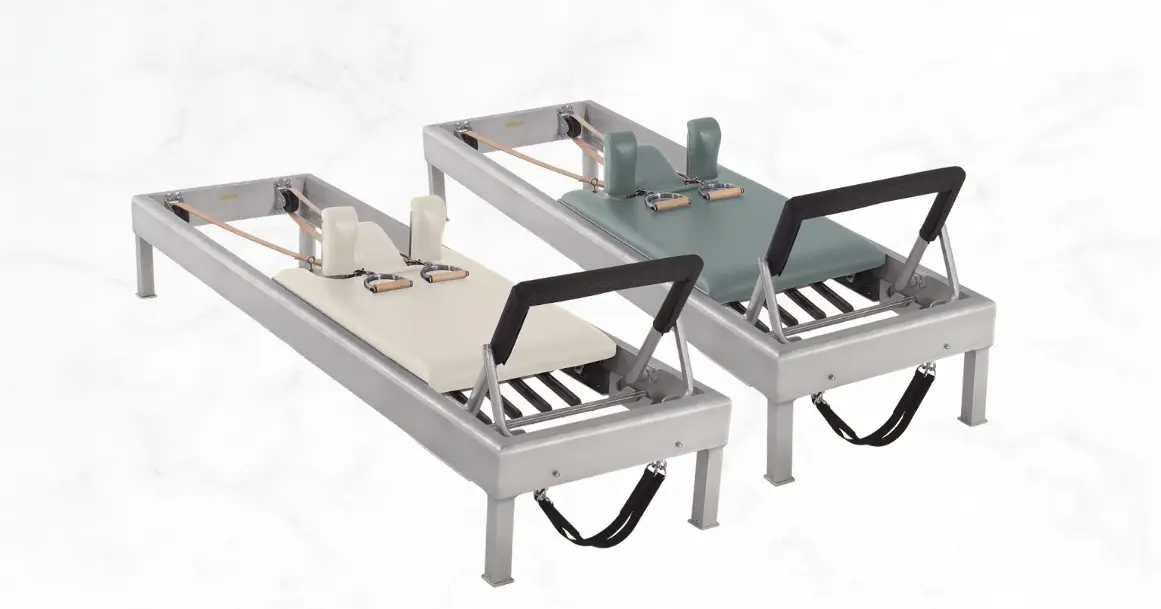Instant shipping quotes available now for orders up to $15K for CA, CO, FL, MA, NC, NJ, NY, PA, TX, VA
Instant shipping quotes available now for orders up to $15K for CA, CO, FL, MA, NC, NJ, NY, PA, TX, VA
Pilates Apparatus or Pilates Machine? Understanding the Language of Pilates
November 04, 2025

If you’ve ever searched for a Pilates machine or Reformer Pilates machine, you’re not alone. These phrases appear thousands of times every month in online searches. But within the world of Classical Pilates, there’s a meaningful difference in how we talk about this equipment.
A Matter of Language and Philosophy
Joseph Pilates never referred to his inventions as machines. In his books Return to Life Through Contrology (1945) and Your Health (1934), he consistently called them apparatus.
Why? Because the apparatus doesn’t do the work for you. Unlike a self-powered machine, Pilates apparatus is fully powered by the human body. The springs, straps, and structure respond to the practitioner’s effort, encouraging control, alignment, and flow.
In Joseph Pilates’ philosophy, the mind guides the body. The apparatus simply assists, offering resistance and feedback that help refine every movement. This idea sits at the heart of Classical practice: the person is the power source.
Pilates Apparatus vs. Pilates Machines
While the terms are often used interchangeably today, they come from two different worlds.
A machine typically operates on its own power — doing the work for the user. A Pilates apparatus, on the other hand, is entirely human-powered. Every spring, strap, and bar responds to your control. The apparatus exists to assist movement, not to automate it.
Joseph Pilates deliberately chose the word apparatus because his goal was to create tools that supported the human body’s natural mechanics. Each apparatus, from the Reformer and Cadillac to the Wunda Chair and Barrel was designed to help practitioners build strength, balance and awareness from within.
The modern use of “Pilates machine” emerged later, as Pilates gained popularity outside the Classical community and was compared to gym equipment. But the essence hasn’t changed, it’s the same equipment, guided by a different mindset.
The Pilates Reformer vs. the Pilates Reformer Machine
One of Joseph Pilates’ earliest inventions, the Universal Reformer, was created to help reform the body — restoring strength, alignment and balance through controlled full-body movement.
Over the decades, as Pilates entered mainstream fitness spaces, people began referring to it as a Pilates reformer machine — a term that made sense to new audiences but strayed from its origins.
In the Classical Pilates community, the Reformer remains an apparatus, a purpose-built tool that develops strength and control through precision, not automation.
Gratz and the Classical Pilates Legacy
Whether you first learned it as a Pilates machine or Pilates apparatus, both terms ultimately describe the same equipment.
At Gratz Pilates, we continue to manufacture apparatus exactly as he intended. Every measurement, proportion, and spring tension preserves the authentic feel that defines true Classical Pilates.
For those new to Classical Pilates, “Pilates machine” is often the more familiar word but in the Classical tradition, apparatus is the term Joseph Pilates himself used. The terminology may have evolved, but the essence remains unchanged: you are the engine, and the apparatus is your guide.
Leave a comment
Community
Recent Articles
-
Restore Your Spine with the Pilates Small Barrel
November 05, 2025
-
Pilates Apparatus or Pilates Machine? Understanding the Language of Pilates
November 04, 2025
-
October Apparatus of the Month
October 31, 2025
-
Posture, Breath, and Balance: The Art of the Pedi Pole
October 29, 2025
-
The Simple Trick to Attract High-Paying Clients to Your Pilates Studio
October 20, 2025

